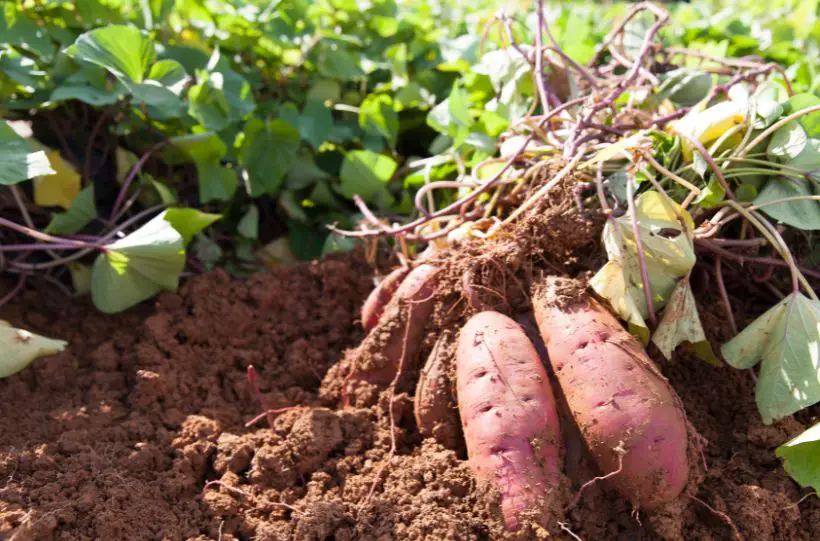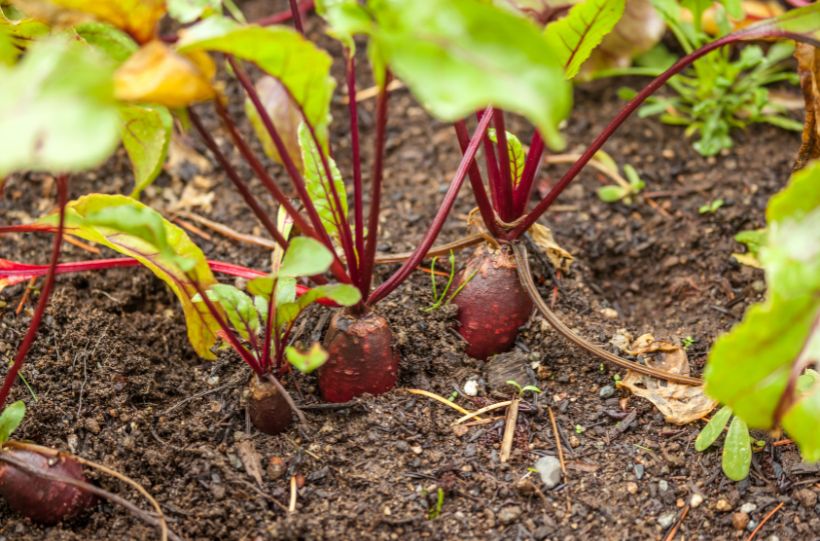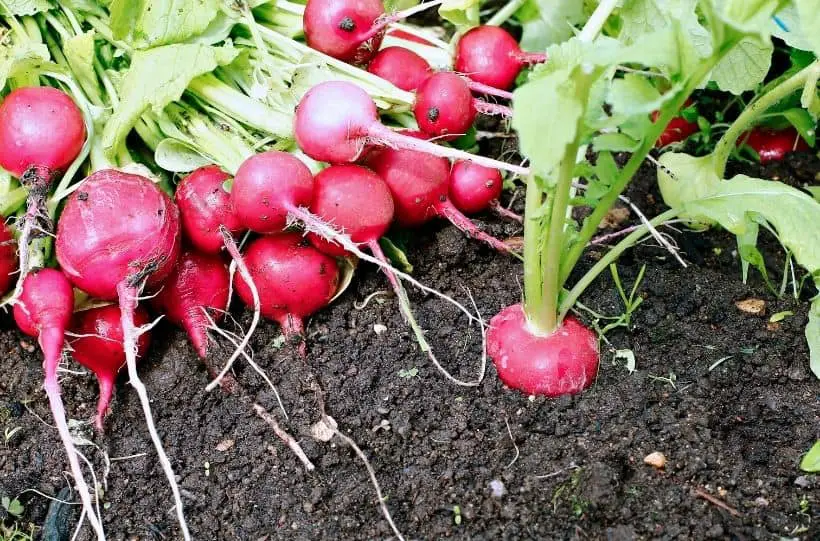5 of the Best Sweet Potato Companion Plants
Sweet potatoes are becoming increasingly popular to grow at home. They are a great alternative to white potatoes, being relatively easy to grow and offering a sweeter taste.
Unlike their name suggests, this tubular-shaped root vegetable is part of the morning glory family (Convolvulaceae), not the potato family. So when planning your vegetable garden, both of these plants make excellent mutual companion plants rather than competing directly for space and nutrients.
There are many vegetables, flowers, and herbs that are excellent sweet potato companion plants. However, like all crops, there are specific plants you should avoid at all costs planting together – and sweet potatoes are no different.
So you know which crops should be planted together with your sweet potatoes and which ones to avoid, keep on reading.

5 Sweet Potato Companion Plants
Choosing a range of plants from this list will not only help your sweet potato plants to grow and ensure there is no direct competition but will also lower the risk of disease outbreaks or pest invasions.
It is best to select a range of companion plants with different benefits to help support your sweet potatoes overall rather than focus on one benefit e.g. attracting pollinators.
Beetroot
Most root vegetables will get along well as a companion plant for sweet potato, and beetroot is no exception. Beetroot can help break up the soil enabling more resources to reach your sweet potatoes.
As beetroot has shallower roots, they also grow at a different depth to sweet potatoes and aren’t in direct competition for space or nutrients.

Plus, beetroot has a long growing season, which means that it will remain in the soil for a long period without disturbing your sweet potato plants whilst they grow and mature.
Parsnips
Like beetroot, parsnips are a root vegetable with a long growing period, which means when planted with sweet potatoes, you won’t be digging up the soil around your plants before they are ready.
However, although parsnips work well when planted near sweet potatoes, they are best not planted directly next to one another. The sweet potato vines won’t interfere with your parsnip leaves as they are large enough to gain the resources they need. But, parsnips planted too close to sweet potatoes can inhibit tuber growth.
Potatoes
As mentioned earlier, sweet potatoes aren’t part of the potato family. Hence using potatoes as a sweet potato companion plant works very well.
They have very similar growing seasons and are pulled up at a similar time, which will limit growth disruption compared with a plant that may have a shorter growing season than sweet potatoes.
Although they do not disturb each other’s growth, they are at risk of the same diseases. When considering your vegetable garden, consider planting potatoes and sweet potatoes near each other but with another plant in between to help limit the risk of diseases spreading from one plant to the other.
Radish
Another root vegetable, radish, helps break up the soil helping to prevent it from becoming waterlogged. Similar to beetroot, radishes have shallower roots and so do not compete with your sweet potato plants, making them excellent companion plants.

Radishes do not have as long a growing season as sweet potatoes. They can be harvested earlier in the growing season, allowing for more space for your sweet potato vines.
Beans
Beans such as pole beans or even peas make excellent companion plants for your sweet potato plants. Bean roots are high in nitrogen which is released into the soil and benefits your sweet potato plants.
When planted together, your beans can either be planted in amongst your sweet potato plants allowing the vines to grow along the ground with your sweet potato vines. Alternatively, you can plant your sweet potato plants in front of your beans and train your beans to grow upwards along a trellis.
This second option provides a mutual benefit for both plants. The sweet potato vines will act as ground protection from the sun and a natural mulch for your beans. Whilst your beans produce nitrogen to replace the resources taken from the soil by your sweet potato plants.
What NOT to Grow with Sweet Potatoes
Like all crops, certain plants should not be planted together. This helps to avoid the transfer of diseases from plant to plant, but also competition for nutrients or space, and the spread of pests.
The following three plants should never be planted near or amongst your sweet potato plants.
Squash
Squash plants require a lot of space and nutrients to grow. They grow on large, wide-spreading vines and, if planted with another vining plant such as sweet potato, will lead to restricted growth of even failed crops.
Sunflowers
Similar to squash, sunflowers take up a lot of space. But unlike squash, sunflowers take up space underground. They have long, wide-spreading roots which will disrupt and potentially even damage your sweet potato plants.
They also encourage potato blight which could result in the loss of your whole sweet potato crop.
Tomatoes
Finally, avoid planting tomatoes in or around your sweet potato plants. Tomatoes are at risk of the same diseases as sweet potatoes. When planted too close together and one of the plants is infected, it could lead to widespread infection.
Plus, tomato plants and potato plants suppress the growth of one another. They are best grown completely separately from each other. Or, to provide an extra layer of protection when planting during the same season, plant one in a container and one in the ground.
Following this growing guide will help ensure your sweet potatoes grow healthy and produce a high-yielding crop. Don’t forget to also plant common flowers that increase the number of pollinators and deter pests from attacking your crops. Flowering plants such as alyssum, yarrow, and nasturtiums are ideal for this task.
For more companion planting tips, take a look at some of our additional gardening posts here:
